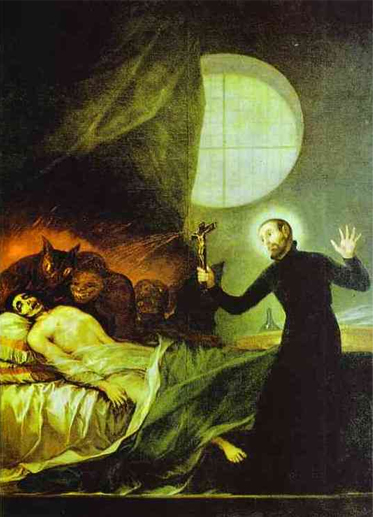As the chronicler of madness and despair, Goya was the first modern painter. Andrew Graham-Dixon on 'Goya: The Small Paintings'
The man in bed does not look well. His whole body has gone into a violent and, it is to be assumed, terminal spasm. He clenches a fist involuntarily and his right leg, knotted with cramp, sticks out from under disarranged bedclothes at an unnatural angle. His face is twisted into a scream.
He is not alone although he might prefer to be. He shares his bed with a horned demon, a monster with the head of a goat, a red-eyed ghoul and a thing with bat's wings. Help may or may not be at hand. By the side of the bed there is a priest, dressed in black, who holds up a crucifix in benediction and looks on, half amazed, half horrified, as a miracle takes place. The figurine of Christ which he clutches, gingerly, has raised a tiny wooden arm to fling a rain of blood across the dying man. It arches through the air to spatter him with thick red gobbets, a blessed and horrible shower.
Goya painted St Francis Borgia Attending a Dying Impenitent, one of about 80 pictures in the Royal Academy's ''Goya: The Small Paintings'', in 1787 or 1788. The image is full of omens, a dark fantasy portending the still darker and more fantastical world of the painter's later and better known creations: a picture which has its roots in the violent and superstitious Catholic faith of old Spain, but which still manages to strike a new, dissident and nearly atheistic note.
This is not the sort of painting which seems calculated to cure those of little faith of their doubts. It is hard to say which is more distressing:...


